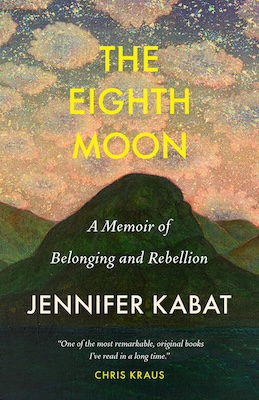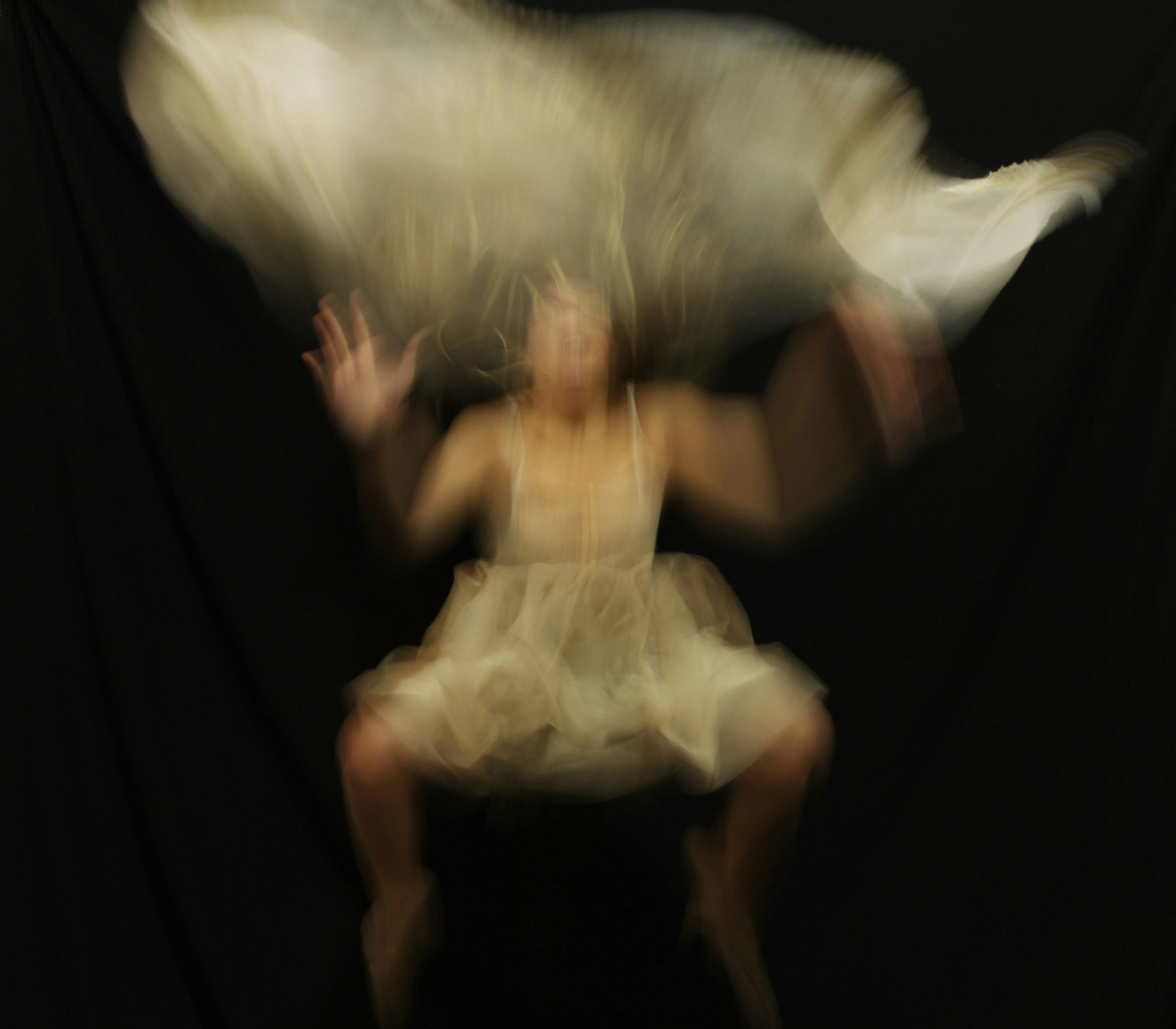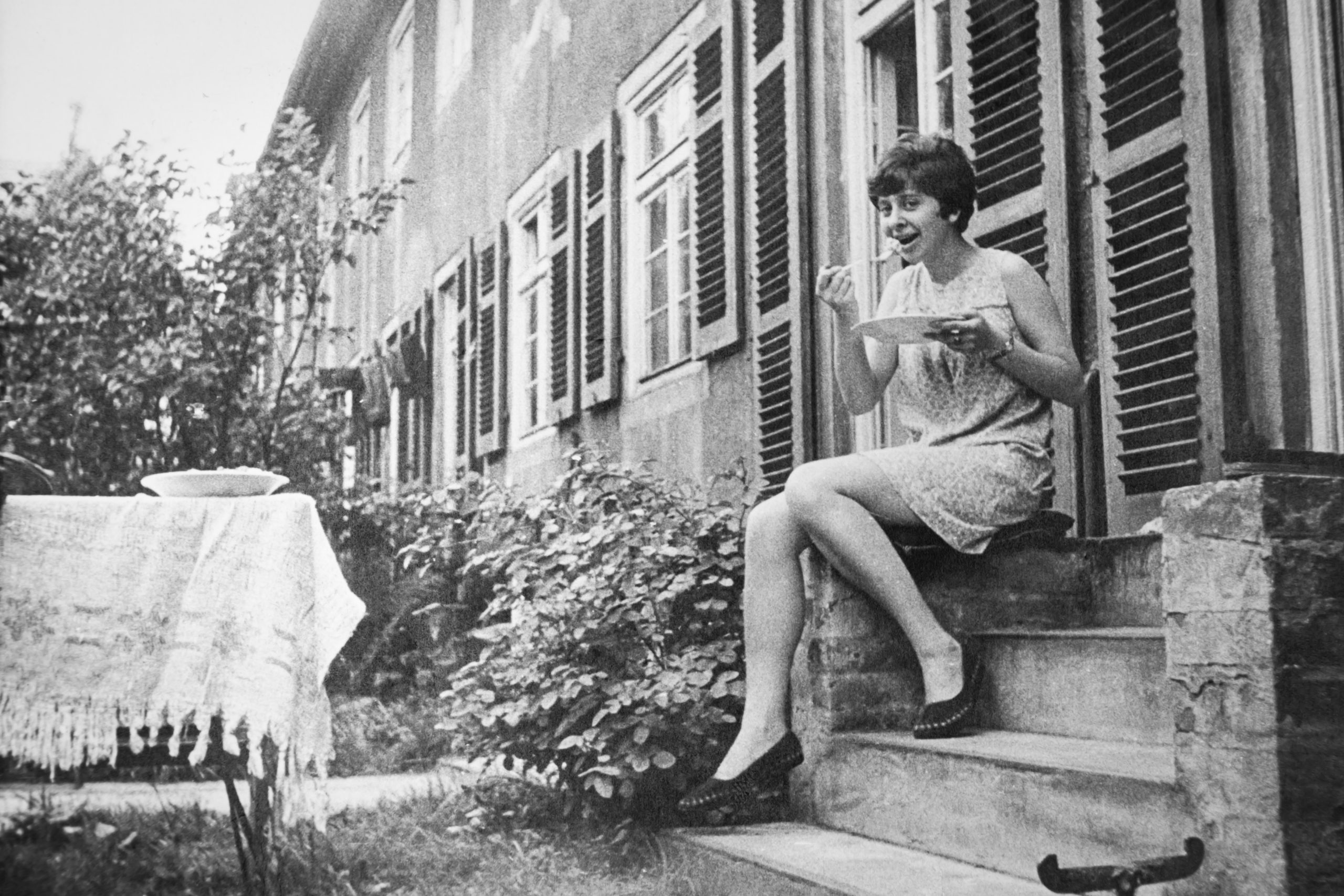Reading Lists
10 Books That Shatter the Concept of Time
Jennifer Kabat, author of "The Eighth Moon," recommends literature that frees us from the constraints of chronology

Electric Lit is just $4,000 away from our year-end fundraising goal of $35,000! We need to hit this target to get us through the rest of 2025, and balance the budget for 2026. Please give today! DONATE NOW.
In high school I read Adrienne Rich’s A Wild Patience Has Taken Me This Far. My copy is dog-eared with outlines of lips I drew on the cover and inside there are countless underlines in my teenaged scrawl. In the poems, Rich quotes from archives, weaving women’s letters and diaries to “stitch” (her word) a way to be then. (Her then was 1980s and still second-wave feminism trying to recover women’s voices). She writes of history as inhabitation, one where we can breathe into the past (or it can breathe into us) in a way that is deep and weird, as if we are alive in it. For me, a goth punk teen skulking around in black like some LARP of Victorian mourning, I gleaned a view of history that exists in the present tense, a polytemporality where all time is alive, all now—and I could be in relation to it.
My book The Eighth Moon is partly a memoir of becoming polytemporous but also of moving to the Catskills, discovering woods and wildflowers, finding community, joining my volunteer fire department, my parents’ socialism and an 1845 socialist uprising in my town. I wanted these elements to exist together, not one thing but all things, not bound to plot and working towards a resolution (hence over) but open and continuous. Also, in our moment today with Trump flags dotting the rural roads, I wanted to be in that earlier era where my neighbors fought to redistribute land, to redistribute wealth.
I wanted to break the chronology inherent in fiction and memoirs. The Eighth Moon is an argument against the expectations of plot. Plot carries ideas of progress—also capitalism, Christianity, and conquering—not to mention linear time. Capitalism requires the myth of individualism, so anything that queers that and opens it helps shift this. As I was writing, I was thinking too about how others have addressed time. In his “Letter from Birmingham Jail,” Martin Luther King Jr and spoke to the “white moderate” who insisted that King wait on time and progress as if those things exist in their own right as some inherent truth. Or, Walter Benjamin and his final essay, “Theses on the Philosophy of History,” written months before he committed suicide trying to escape the Nazis. He writes against the idea that time unfolds like “beads on rosary” and faith in the “infinite perfectibility of mankind… [where] progress was regarded as irresistible.”
There is also German poet Ingeborg Bachman’s Malina and her opening of “today,” where that day is endless… And, radical American historian Lawrence Goodwyn, who wrote one of the greatest books of the U.S. left, The Populist Moment. (Small side note: I grew up in a family where, because of the late 19th-century Populist People’s Party he describes, I believed all populism was socialist). He derides progress and the way in which, under its tenets, history goes to the winners and other movements are always perceived as over and defeated. Now a stack of books by queer and women writers stands on my desk like a totem. They all bend time to undo the hold of chronology. Quotes from them spread across the wall behind me billowing in a cloud. They’re tacked up with blue tape—the kind painters use to protect trim without leaving a mark—so I can move the lines around, and they are in relationship—all together, all at once, without hierarchy.
Emergency by Daisy Hildyard
In the New York Review last year, Daisy Hildyard described “an ethos of annihilation” in most fiction today that excludes any detail not furthering plot or character. That something is valuable only as it is useful in a narrative strikes me as a metaphor for capitalism itself—and for the individualism capitalism lionizes.
In Hildyard’s novel Emergency, details spiral out to show how we’re all interlinked under capitalism. The first-person narrator, who could be Hildyard herself, recalls her childhood in rural Yorkshire. A piece of rusted industrial equipment ties the village to a global mining conglomerate. And the memory of a stowaway spider the narrator finds as a child in a bunch of bananas carries through to her travels in Nicaragua in her twenties, to the pandemic, and to a shipping container housing an expensive coffee bar. Finally, it arrive at the pesticides that kill those spiders and cause cancer in those who work on banana plantations.
Emergency literalizes (and turns into literature) ideas from Hildyard’s book-length essay about the climate crisis, The Second Body. “You are stuck in your body right here, but in a technical way you could be said to be in India and Iraq, you are in the sky causing storms, and you are in the sea herding whales towards the beach. You probably don’t feel your body in those places: it is as if you have two distinct bodies. You have an individual body in which you exist, eat, sleep and go about your day-to-day life. You also have a second body which has an impact on foreign countries and on whales.” The interconnectedness Hildyard sees demands a new kind of writing to emerge, a parataxis of us all together and in it, a world where I too can hold Adah.
The Long Form by Kate Briggs
Imagine the story that comes nine months after Molly Bloom’s “yes.” Briggs’ The Long Form covers 24 hours in the life of a single mother and new baby. It is a novel and an essay on time and the novel, on raising a baby, and on how the newborn experiences time. In it is a central question akin to the one Hildyard asks about details in fiction. Who is worthy of a novel? A baby? A single mom? Or: the Amazon delivery driver who brings a secondhand copy of Henry Fielding’s Tom Jones? (The book is central to Briggs’ investigation of what a novel might be).
These questions are posed to E.M. Forster as he delivers his lecture on the novel. This new mom Helen and baby Rose travel back nearly a century to 1927 and burst into the classroom: Forster glances up but can’t hear Helen for all the people in the lecture hall. He sees her gesture to the baby. “He surmises that she’s saying something like: Think of a baby. There is a baby wrapped to her chest, sleeping in a bundle under her big coat. Something like: Consider not a general idea of a baby but an actual baby with a weight, and presence, whose needs pitch and fall but don’t stop. Think about how, if there is such a thing as denial – a categorical refusal to recognize and submit to socially organized, collective, ‘official’ time – then here it is.”
This baby has shattered “official time,” but “Helen was still living, or trying to live, in accordance with collective time, social and official, clock-time.” And, the Amazon driver (who is barely in the book) bends the laws of time and space to be with his girlfriend in what I call the manicure monologue. (He celebrates her artistry). Instead of isolated characters and their individual struggles, The Long Form is suffused with a love to link us all.
Sleepless Nights by Elizabeth Hardwick
When Sleepless Nights was still just an essay in the New York Review in the early ’70s, Elizabeth Hardwick mentioned an unnamed novelist in it (who I think is William Gass). He “cannot accept a linear motivation as a proper way to write.” Instead, plot is replaced by “chaos.” By the time the novel came out in 1979, those lines are gone, but she still does not accept this linear motivation, nor plot, nor progress. The book is a divorce story where the marriage is barely mentioned and moments of a life run together as if this is how time is experienced in middle age. (Also contradicting the idea of marriage as its own end/conclusion). Nominally fiction, Sleepless Nights breaks from any novelistic standard of time, even doing away with moment-linking transitions.
In Come Back in September, Darryl Pinckney’s fantastic biography/memoir of his relationship with Elizabeth Hardwick, Pinckney quotes her saying, “Nothing is worse than a transition.” Here instead, time is dimensional and all at once. She draws from pieces of her criticism, including entire passages from her essays, in the book. It’s first-person, present-tense—and past. I read her opening lines over and over: “It is June. This is what I have decided to do with my life just now. I will do this work of distorted memory and lead this life, the one I am leading today.” A couple pages down she writes of “Looking for the fossilized, for something – persons and places thick and encrusted with final shape, instead there are many, many minnows wildly swimming, trembling, vigilant…”
Malina by Ingeborg Bachman
Ingeborg Bachman’s final book and only novel, Malina was published at the same time Hardwick started working on Sleepless Nights. Bachman writes in the wake of Nazi Germany. Her father was a party official and her subject is always the collapse of the Enlightenment/positivist dream. Technologists, communists, capitalists, and Nazis all shared a fantasy of progress (whatever view that endpoint looked like). For Bachman at the time of Malina, poetry could no longer hold the “peril” she saw in the world. And in this, male violence was her theme. The book is a collage of experiences. Her first sentence opens with a perpetual present: “‘Today’ is an impossible word for me. . . you can’t escape it [. . . ]. This today sends me flying into the utmost anxiety and the greatest haste[. . ..]. In fact ‘today’ is a word that only suicides should be allowed to use.” That book is, yes, a love triangle and a crisis but really the crisis of post-Nazi Austria/German and male violence.
Addicted to tranquilizers, Bachman died two years after the book’s release. She succumbed to burns from a fire started while smoking in bed, facts that somehow make her today even more poignant to me. In this way time breaks down and approaches Walter Benjamin’s writing about the failure of progress at the end of his life.
The Baudelaire Fractal by Lisa Robertson
In Robertson’s bildungsroman, Hazel Brown (a name I love as it implies the muted shades of averageness and who doubles for Robertson herself) comes-of-age and into full possession of Baudelaire’s oeuvre. The book doubles these two times and is partially an essay on Baudelaire. Brown’s porousness is also literally a stain—menstrual blood—that spreads out.
In response Brown/Robertson writes a feminine/ist poetics which also takes in clothes, as if taking the fold as a literary device instead of linearity—what she calls: “The supple kaleidoscope of a female thinking…. The collage of fantasy, pigment, quotation, and architecture that I walked through daily in my outfits and my obsessions, I came to notice small-scale transpositions, tiny openings within the texture of the present, where choices towards a freed thinking could be possible.… the annotation of the present-tense irruption of my body in the city or in reading.” Like Sleepless Nights, the book is about memory in middle age and how time runs together. She writes: “If I could open the temporality in sentences, perhaps a transformation could take hold.” Time becomes her “linguistic material,” as Brown occupies the 19th century, as well as the late 20th, and the early 21st.
A Line in the World by Dorthe Nors
The Danish novelist takes to the North Sea coast, traveling its 600 miles in an old Toyota with her parents’ old road atlas. Nors finds shipwrecks and chemical spills, bird migrations and memory all held in these places. She sucks on a piece of amber washed up by the tides as if eating time itself in the fossilized resin. Here, place is a palimpsest of history (unlike how history has existed in the US and much of Europe: simply sweeping over a blank location as if that blankness is its own fact. This has allowed us in the US to believe place is empty and its original peoples simply adjuncts to the land, so conquerable).
In the first essay “The Line,” she studies the map: “If I could do what I wanted with time, if I could accelerate it like a piece of time-lapse footage where the roses turn from bud to blossom, the line would be alive. The drawing would always be moving. It would bend forwards, shift backwards, open, turn, perforate; then close, then open up again. It would vanish in part beneath heavy masses of ice but be revived as something else […]. It is a living coastline made of sand. Always becoming, always dying. […] the coastline has all the time in the world.”
This time can also kill. One stark line, later in the book, about a peninsula with buried World War II weapons: “You could go for a walk and get your legs blown off by the past.”
Socialist Realism by Trisha Low
Low writes to the constellation of art, family, and politics in a quest for home and belonging as she moves West through the US, first to New York and then to California. Her book-length essay is braided and intercut—so she doesn’t have to conform to narrative time. It is all present tense and escapes chronology. Times repeat, and she anchors the text with “I am” or “It is… ” “It’s Sunday and I’m vacation.” Then two paragraphs later, “It’s years ago and I am …” Memory, museum installations, capitalism, protests, home … all exist in parataxis, all in the present. The POV is pointillist vs. linear, which fits her quest for home as utopia, which is always no place. Or, placeless and timeless. In this endless repetition of I am and it is, the dream of movement West and capitalism, the isms themselves have no resolution. Perhaps that reflects the endless questing of modern life with scrolls on social media feeds where all is now. While this sounds dark, in Low’s hands, the perpetual present feels freeing, as if the ultimate freedom is to observe, to be present in the moment.
Sterling Karat Gold by Isabel Waidner
In a novel that starts with anti-trans, anti-immigrant violence on a London housing estate, Waidner creates the novel version of a queer buddy movie that is also a recreation of Kafka’s The Trial. They collage the Beach Boys and Hieronymus Bosch paintings, fashion and British football, along with one legendary, lost Shoreditch bathhouse, Chariots Roman Spa. They break narrative time for the radical goal of creating a book that reflects BIPOC working-class, immigrant London now. Today. They also wrest the novel from elites and see experimental modernist work as a strategy out of current capitalism. As they’ve said in interviews: “I have come to think of the British novel as a—if not the—technology for the reproduction of white middle-class values, aesthetics and a certain type of ‘acceptable’ nationalism. So it has to change, and not just subtly either.”
Instead, they want to write that violence and “offer creative escape routes.” SKG is suffused with wormholes, time travel, and UFOs. The UFOs extend from early Renaissance paintings where the Annunciation arrives in something like spaceships to the Nation of Islam’s teachings on UFOs. Waidner uses Google Street View and its time stamps to move characters in time and place. The narrator Sterling holds forth on the history of Google Earth (developed originally as gaming software, then used in the 2003 Iraq Invasion—and sold to Google the next year after the original developer couldn’t convince the CIA to buy it). The characters go to San Francisco and Baghdad, “Click on the clock icon in Street View, upper left corner of the screen. Allows you to access historical imagery, going back almost fifteen years,” Sterling explains, and earlier:
“Shall I?! Shall I test the ideas I’ve been having of late, about time-travelling, its potential role in re-writing the past and changing the present? I just don’t think it’ll work—all it’ll do is reduce me to reliving recent weeks, stuck on the dreaded Street View grid. The spaceship’s time travel function really is as basic, inflexible and imprecise as to be practically useless! Is just another digital technology whose radical potentiality is wildly overstated. I kick it, FU. FU, Street View time travel function!”
Spoiler: it does work. The bad guy/state cop gets stuck in Street View, forever pixilated in a gas station forecourt, and Waidner’s characters transform the rules of the time-based world and all it comes bound with.
Zero Hour in The Scent of Light: A Collection by Kristjana Gunnars and Pure Colour by Sheila Heti
Time cracked open when my father died. I wasn’t really prepared for huge swells of loss, and didn’t even realize I was grieving. Or, I wouldn’t give myself room to grieve. Instead I was just angry all the time. A month later, around my birthday, I was in a hemlock forest, and my dad appeared to me. He had on old khakis and a turtleneck like he wore hiking, and he stayed with me until my mom died six years later. I realized grief might be the ultimate psychedelic experience. You are with your dead beloved and not.
Losing their fathers allows two Canadian writers separated by more than a generation to travel in time, and both are obsessed with time in their books. One novel was written towards the end of the Cold War fears and the other at the end of our world now. Kristjana Gunnars’ Zero Hour, her philosophical novel about writing and loss, was reissued a couple of years ago by Coach House in The Scent of Light. Zero Hour is circular like grief. It cycles around and around. In the novel, landscape and character displace time (a bit like in Sleepless Nights). The book begins with a bomb blast, described as an atomic bomb. This one though is death, and it rips a hole through time. Gunnars writes, “Grieving is remembering.”
Sheila Heti’s gorgeous novel is obsessed with time, or with finding things that transcend it, like art. The main character Mira is searching for something eternal whose meaning endures. (This is a plaintive longing all writers might secretly share, and this might also be a book about early middle age, when the larger questions of what lasts and what doesn’t start pressing in). Pure Colour, though, is written in our time of climate collapse and looming extinctions (“Seasons had become postmodern”). Mira’s father dies in the midst of her quest (as did Heti’s as she was writing). Instead in grief, Mira finds her father in a tree, in a leaf. She is with her dad in the leaf—something I relate to. Grief made me porous too. I was convinced my mom is in a hoya plant on my kitchen counter, and there was my dad in the forest. Just as I found peace with him in the woods, Mira too finds acceptance. Her father tells her art does not need to transcend all. It is enough that it has mattered.









